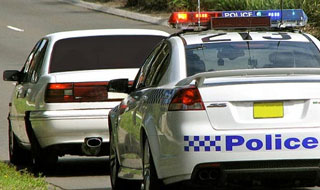Car Tinting Law
Darkest Legal Tint
What are the Window Tinting Rules & Regulations for Victoria & other Australian states?
Tinted windows may reduce driver vision if not applied accordingly to state and territory regulations. Therefore Vic Roads enforces a 35% VLT (visual light transmittance) on your 2 front windows (driver & passenger) meaning you must allow 35% of light to filter in through your glass from the outside & then 20% VLT to filter through on your rearward windows (B Pillar backwards), this excludes the front windscreen (please see below) Any VLT reading below the two above will render your vehicle unroadworthy. Safe driving requires the driver to have the best possible vision and reduction in driver visibility particularly in poor light conditions will lead to a reduction in safety.

GOODS VEHICLES: Tinting laws for these vehicles differ in most States and Territories – so ensure you know the rules before you apply tint. Typically, as long as other requirements are met, any darkness film is allowed behind the driver in vehicles with a goods vehicle classification (check the identification plate for the classification). ‘Commercial vehicles’ do not mean 4WDs, but rather vehicles registered as a commercial type.
WINDSCREEN: After-market tinted window film cannot be applied to the windscreen, we can however install a tinted visor strip across the top of the screen (which is outside the driver’s primary vision area). Each State/Territory stipulates how this visor strip should be measured however it is normally as a rule 10% of the height of the windscreen & is above the portion of the windscreen swept by the wipers, the tinted band must not cover any sensors or cameras mounted inside.
REFLECTIVE WINDOW TINT: Reflective films are more dangerous than illegally dark window films. Police and transport departments are vigilant on defecting vehicles with reflective films. Reflective films are the shiny silver and bronze films, which can be ‘fader’ films changing from dark to reflective, solid reflective films or sometimes shapes such as flames or similar, reflective films are legal on show vehicles only.
WINDOW FILM RULES & REGULATIONS by States of Australia
Queensland
New South Wales
Australian Capital Territory
South Australia
Western Australia
Tasmania
My car has “Privacy Glass” “Factory Tinted Glass”already on the rear windows straight from the manufacturer........ What is this and what does it offer? Does it protect my children?
- Does factory PRIVACY GLASS / FACTORY TINTED GLASS offer UV Protection ? UVA & UVB Protection? NO
- Does factory PRIVACY GLASS / FACTORY TINTED GLASS reduce Glare? YES
- Does factory PRIVACY GLASS / FACTORY TINTED GLASS offer Heat Rejection / Reduction? Approx. 16% - 20%
- Does factory PRIVACY GLASS / FACTORY TINTED GLASS have any safety benefits? NO (PLEASE Read Below)
We always recommend installation of our UV CLEAR window film for SAFETY & UV PROTECTION on this glass as privacy glass offers NO UV Protection & can shard everywhere through your vehicle on impact and cause irreversible damage to passengers, children & animals in the event of breakage from an accident or like. By installing UV Clear film to your privacy glass it will bring your properties up to approx. 65% Heat Rejection, 99.9% UV and keep the glass in place in the event of any breakage acting as a safety feature also.
New vehicles fitted with privacy glass (factory-tinted glass on the rearward windows from the manufacturer) have the same VLT rules apply as per state regulations above. (i.e. the combination of glass + film must not exceed the VLT limits) Privacy glass is a coloured glass that normally has a VLT (visual light transmittance) of between 10%-20% and can come standard from the manufacturer on the rearward windows (B pillar backwards) only.









